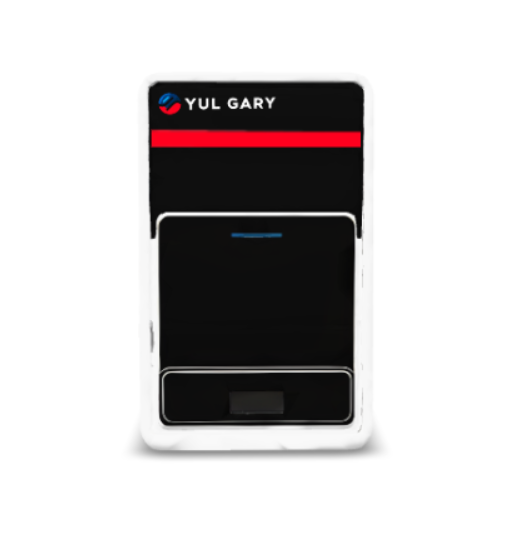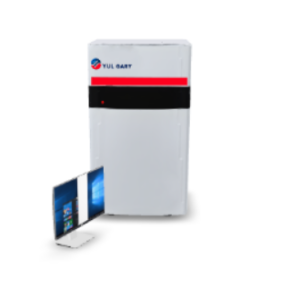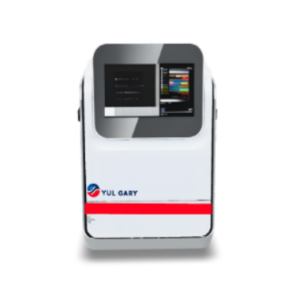Description
The Chemiluminescence Imager (Mini) YG1702 / YG1703 is a cutting-edge imaging solution crafted for high-sensitivity chemiluminescence detection, making it the ideal choice for Western blot analysis using ECL. Featuring a cooled CCD camera with 6 megapixels and 16-bit depth, along with ultra-sensitive lenses (F0.95 for YG1702 and F0.8 for YG1703), this device ensures unmatched high-resolution imaging. Its dynamic range of ≥4.6OD guarantees accurate quantification of faint bands, while the deep cooling capability down to -60°C below ambient minimizes noise. The user-friendly and dongle-free software supports unlimited users and provides free lifetime updates, positioning this imager as a top choice for researchers who need a cost-effective, yet high-performance solution.
Market Price
Considering the sophistication of the Chemiluminescence Imager (Mini) YG1702 / YG1703, it’s priced within a market range of approximately $17,500 to $18,400 USD. This positions it firmly in the mid-to-high segment for laboratory imaging systems, offering outstanding value given its advanced features and capabilities.
Frequently Asked Questions
- What are the main differences between the YG1702 and YG1703 models? The primary difference is in the lens sensitivity; the YG1703 features an ultra-sensitive F0.8 lens, allowing for lower detection limits in comparison to the YG1702’s F0.95 lens.
- Is the software really free forever? Yes, absolutely. The software does not require dongles, allows unlimited users, and includes comprehensive free updates.
- How does this imager compare with larger systems? Despite its compact size, it includes professional-grade specifications such as -30°C regulated cooling and 65536 grey scales, offering a space-efficient option without sacrificing performance.
Advantages and Disadvantages
The high sensitivity of the Chemiluminescence Imager under low-light conditions makes it an outstanding choice for ECL workflows. Its plug-and-play convenience is widely appreciated by users, along with its intuitive software interface. However, the cooling fan can be somewhat noisy, a common issue with CCD systems, suggesting placement in a dedicated space may be necessary. It is an affordable alternative for academic laboratories, CROs, or biotech teams requiring reliable imaging capabilities without the bulk.
Product Usage in the Field
The YG1702/YG1703 excels in daily Western blot imaging, consistently delivering reproducible and publication-ready results. To maintain optimal performance, it is recommended to carry out regular calibration and store the device in low-humidity conditions. Pairing the imager with high-quality ECL substrates further enhances signal-to-noise ratios, maximizing research efficacy.
Recommendations
For laboratories looking to enhance their imaging capabilities, it is advisable to focus on regular calibration, maintain suitable environmental conditions, and use high-quality substrates to fully leverage the Chemiluminescence Imager YG1702/YG1703’s potential. Precision in research is a priority, and this imager supports seamless integration into your workflow.
Features
- Cooled CCD camera with 6MP and 16-bit depth
- Distinct lens options: Sensitive (YG1702) and ultra-sensitive (YG1703) for better detection limits
- Dynamic range of ≥4.6OD for precise quantification
- Deep cooling capability down to -60°C below ambient temperature
- Dongle-free, unlimited user software with free lifetime updates
Technical Specifications
| Model | YG1702 | YG1703 |
| Digital Camera | Cooled CCD Camera | |
| Physical Resolution | 6 Megapixels,2750*2200 | |
| Pixel Density and A/D | 16 Bit | |
| Grey Scales | 65536 | |
| Dynamic Range | ≥4.6OD | |
| Cooling Temperature | -60℃ below ambient, -30℃ regulated | |
| Scientific Lens (Difference between both models) | Sensitive F0.95 Lens | Ultra sensitive F0.8 Lens |
| Image Acquisition Software | No software dongle required, unlimited users, free update | |
| Image Analysis Software | No software dongle required, unlimited users, free update | |





